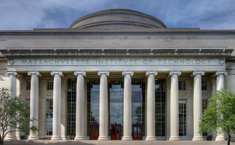
Project: Vattenfall Janschwalde
Company/Alliance: Vattenfall
Location: Janschwalde, Brandenburg, Germany
Feedstock: Lignite coal from nearby open cast mines
Process: Pulverized coal (PC) boilers combusting lignite
Size: 300 MW total: 1.7 Mt/yr capture a year
Capture Technology: Oxy fuel combustion (250 MW) and post-combustion (50MW)
CO2 Fate: Onshore saline formation delivered via pipeline or depleated gas field
Timing: Cancelled due to opposition based on environmental fears and lack of legal framework.
Original schedule: Announced (May 2008); Feasibility studies (2008); Application for permits (2009); Construction of new boiler start (2011); Full scale operation (2016)
Motivation/Economics:
Total investment is €1.5 billion ($2.2 billion) invested by Vattenfall. €1.2 billion for capture and €0.3 billion for transport and storage.
Awarded €180 million from European Programme for Energy Recovery (EEPR) in December 2009. Vattenfall has submitted an application for the EU's NER300 funding.
Vattenfall will not return the all of the 45 million euros it had been awarded for the project so far. Most of this money has already been spent. The remaining money will be returned to the EEPR.
Comments:
Vattenfall quotes the cancellation of the Janschwalde pilot plant due to the large scale opposition from the public on with environmental fears in addition to the lack of the German Government to delineate the CCS legal framework: The German Bundesrat (Federal Council) rejected the CCS bill on September 23, 2011, and then a mediation committee was formed, which adjourned twice in November without result.
This had been Vattenfall's larger scale demonstration project after the pilot plant at Schwarze Pumpe was opened in 2009. Janschwalde is the largest coal fired power station and the largest CO2 emitter (25 MT/Yr) in Germany. Before cancelling the project Vattenfall was in the final engineering phase for a demo plant in Jänschwalde. This constituted a completely new block of 250 MW capacity (in addition to the existing six blocks of 500 MW each) at that site. In addition to this Vattenfall was going to rebuild one of the existing blocks (block F) and add CO2 capture with post combustion technology on a slip stream corresponding to 50 MW capacity. It had planned to be in operation in 2016.
The probable storage sites were Mesozoic and Cenozoic sandstones in the eastern part of the North-German Basin. They contain open and closed structures at a depth of 900 to 4000 meters. The 2 structure formations are the Birkholz structure (50 km distance from the project) and the Neutrebbin structure (140 km from Janschwalde power plant). The main land use in this area is agricultural and forestry.
Project Link: Vattenfall Jänschwalde demonstration plant web page
Other Sources and Press Releases:
Vattenfall release their front end engineering and design (FEED) studies for the Jänschwalde project(August 2012)
Vattenfall drops carbon capture project in Germany (December 2011)
Vattenfall drops CCS demo project at 3000 MW coal-fired power plant in Germany ( December 2011
The Janschwalde CCS demo project in Germany presentation at CO2GEONET [PDF] (May 2011)
The Janschwalde CCS demo project in Germany presentation at CO2GEONET [PDF] (May 2010)
Awarded €180 million from EU government (December 2009)
Power Engineering news release (May 2008)